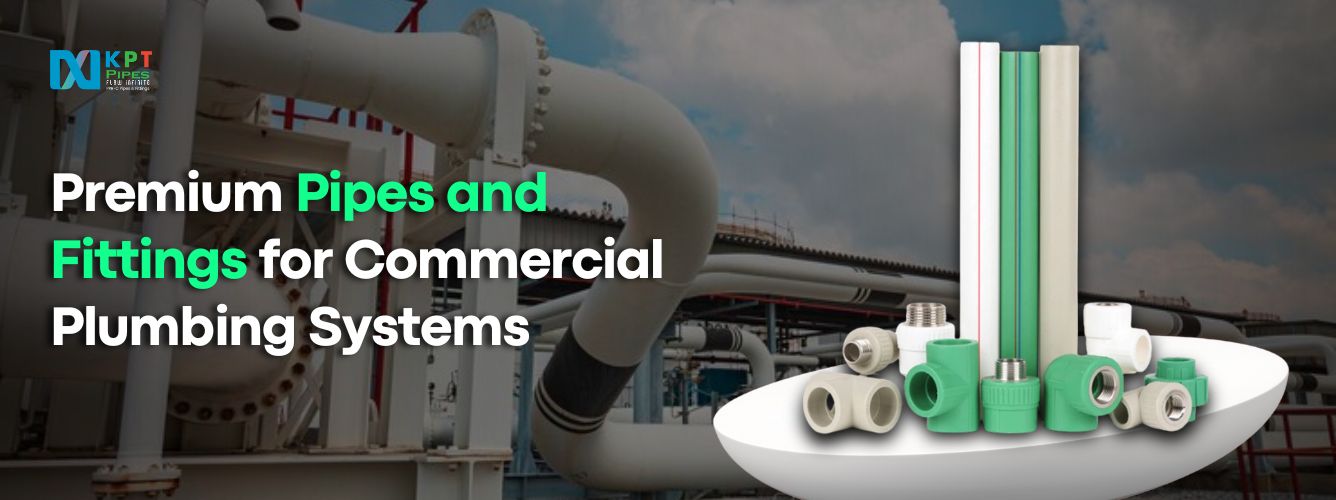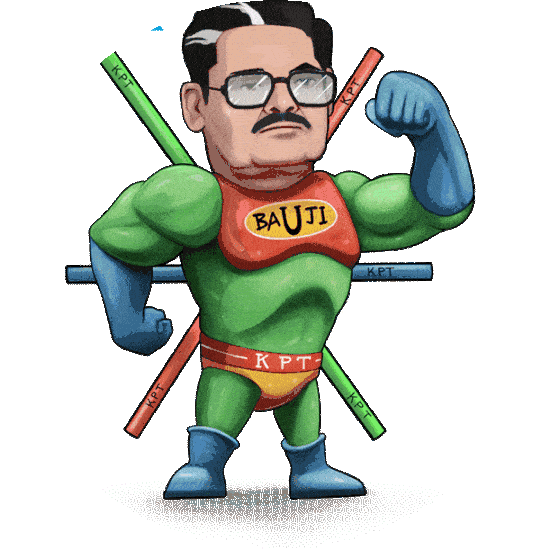
27 Jan Premium Pipes and Fittings for Commercial Plumbing Systems
Premium Pipes and Fittings for Commercial Plumbing Systems
In the world of commercial plumbing, having a durable, efficient, and reliable plumbing system is paramount. Whether it’s for office buildings, industrial facilities, or commercial establishments, the quality of the pipes and fittings used can make or break the overall functionality of the system. PPR pipes (Polypropylene Random Copolymer) have emerged as the go-to solution for commercial plumbing due to their superior performance, long-lasting durability, and cost-effectiveness. In this blog, we will explore the reasons why PPR pipes are considered premium choices for commercial plumbing systems and why they should be a top consideration when choosing commercial pipes.
What are PPR Pipes?
PPR pipes are advanced plumbing pipes made from a high-quality thermoplastic material known as Polypropylene Random Copolymer. These pipes are highly resistant to pressure, temperature fluctuations, and chemical corrosion, which makes them ideal for both residential and commercial plumbing systems. PPR pipes are often used in hot and cold water distribution, heating systems, and other essential plumbing applications.
Unlike traditional materials like copper or galvanized steel, PPR pipes are lightweight, easy to install, and provide excellent resistance to scaling and corrosion. They come in various sizes and are commonly used for transporting drinking water, heating systems, and more.
Key Features of PPR Pipes and Fittings
Thermal Resistance: PPR Commercial pipes can withstand temperatures up to 95°C, making them suitable for hot water systems. This high thermal resistance ensures reliability and safety even in extreme temperature conditions, making them a preferred choice for various commercial applications.
Chemical Resistance: They resist a wide range of chemicals, ensuring durability in challenging environments. This property makes them ideal for industries dealing with corrosive substances, as it ensures longevity and operational efficiency.
Non-Toxic and Hygienic: PPR pipes are safe for potable water systems as they do not leach harmful substances. They maintain water purity and are trusted for use in sensitive environments like hospitals and food industries.
Longevity: With a lifespan of over 50 years under ideal conditions, PPR pipes offer a cost-effective long-term solution. Their durability minimizes replacement needs and ensures consistent performance over decades.
Low Thermal Conductivity: Minimizes heat loss in hot water systems, enhancing energy efficiency. This feature contributes to reduced energy costs and supports environmentally sustainable operations.
Advantages of PPR Pipes and Fittings for Commercial Plumbing
Durability and Strength: PPR pipes are incredibly durable and capable of withstanding high pressures and mechanical stress. This makes them perfect for commercial environments where the plumbing systems are subjected to heavy use. Their robust structure ensures long-lasting performance even under demanding conditions.
Corrosion Resistance: In contrast to metal pipes, PPR pipes are impervious to corrosion over time. This property ensures the integrity of plumbing systems in commercial establishments, reducing maintenance and replacement costs. It also prevents water contamination caused by rust and corrosion.
Leak-Proof Connections: PPR fittings use heat fusion technology, creating seamless and leak-proof joints. This not only enhances the reliability of the plumbing system but also minimizes water wastage. Leak-proof connections are crucial in maintaining efficiency and reducing operational costs.
Eco-Friendly: PPR pipes are recyclable and manufactured using environmentally sustainable methods. Their extended durability further decreases the necessity for regular replacements, thereby lessening environmental impact. Choosing PPR pipes supports eco-conscious construction and maintenance practices.
Cost-Effective: Although the initial investment in PPR pipes may be slightly higher, their low maintenance, durability, and energy efficiency make them a cost-effective choice in the long run. Businesses benefit from lower operational costs and fewer disruptions.
Applications of PPR Commercial Pipes in Plumbing Systems
1. Water Supply Systems
The most common application of commercial pipes made from PPR is in water supply systems. Whether it’s for drinking water, hot water, or other industrial fluids, PPR pipes provide a reliable and efficient solution. They can handle the high pressure required for large commercial buildings and factories, ensuring a steady flow of water without leakage or contamination.
2. Heating Systems
PPR pipes work perfectly for heating systems, especially underfloor heating systems widely used in commercial buildings. Their ability to withstand high temperatures without becoming brittle or weak makes them the perfect choice for transporting hot water or heating fluids. This ensures that the heating system functions efficiently and without interruption.
3. Cooling Systems
Many commercial buildings require cooling systems to regulate temperature and maintain a comfortable environment for employees and customers. PPR pipes are also excellent for use in air conditioning and refrigeration systems, as they can easily handle the cold temperatures and high pressure needed for these applications.
4. Industrial Fluid Transportation
In industries where chemical or acidic fluids need to be transported, PPR pipes can be used due to their excellent resistance to corrosion and chemical reactions. The ability to withstand a wide range of chemicals makes them an optimal choice for industrial plumbing systems. They help reduce the risk of leaks, spills, and contamination, ensuring a safe and functional environment.
Types of PPR Pipes and Fittings Used In Commercial Plumbing
Standard PPR Pipes: These are versatile pipes used for general hot and cold water distribution in commercial settings. They are the go-to option for routine plumbing applications due to their reliability and affordability.
PPR-CT Pipes: Designed for higher pressure and temperature systems, PPR-CT pipes are ideal for industrial and heavy-duty applications. They provide superior performance in challenging conditions.
PPR-AL-PPR (Composite Pipes): These pipes have an aluminium layer that enhances their strength and minimizes expansion, making them perfect for high-temperature systems. Their composite structure ensures stability and efficiency.
UV-Resistant PPR Pipes: Specially designed for outdoor use, these pipes resist UV radiation and prevent degradation. They maintain their integrity and performance even when exposed to direct sunlight.
Glass-Fiber Reinforced PPR Pipes: These pipes are reinforced with glass fibres to enhance their thermal stability and mechanical strength. They are ideal for applications requiring superior durability and performance.
PPR-Fittings:
- Elbows and Bends: For directional changes in pipelines, providing flexibility in design.
- Tees and Crosses: For branching out pipelines, enabling efficient network setups.
- Reducers and Couplings: These are used to connect pipes of different diameters and ensure compatibility.
- Valves: For controlling water flow, offering precision and reliability.
Why Choose PPR Pipes for Commercial Plumbing Systems?
Reliability in High-Pressure Systems Commercial plumbing systems often operate under high pressure, and PPR pipes excel in such conditions. Their robust design ensures minimal risk of bursting or leaking, providing peace of mind to building operators.
Adaptability to Extreme Temperatures Whether it’s cold or scorching heat, PPR pipes and fittings maintain their integrity, making them a dependable choice for diverse climates. This adaptability enhances their versatility in various commercial applications.
Hygienic and Safe In commercial spaces like hospitals and restaurants, maintaining water quality is crucial. PPR pipes do not harbour bacteria or release toxins, ensuring hygienic water transportation. Their non-toxic nature makes them ideal for potable water systems.
Easy Installation The heat fusion method simplifies the installation process, reducing labour costs and time. This efficient installation process enhances project timelines and minimizes downtime.
Resistance to Wear and Tear Commercial plumbing systems face constant wear and tear. PPR pipes are designed to resist abrasions and physical impacts, ensuring longevity. Their robustness minimizes the frequency of repairs and replacements.
The installation and upkeep of PPR pipes and fittings
Proper installation and maintenance are critical to ensuring the optimal performance of these Commercial Pipes In Plumbing Systems. Here are some tips:
Installation Tips
- Use the correct tools and equipment for heat fusion to ensure seamless joints.
- Ensure pipes and fittings are clean before joining to avoid contamination.
- Follow manufacturer guidelines for temperature and pressure limits to prevent damage.
Maintenance Tips
- Conduct regular inspections for any signs of wear or damage, addressing issues promptly.
- Clean the system periodically to prevent blockages and maintain efficiency.
- Replace worn-out fittings promptly to avoid disruptions and ensure smooth operation.
Innovations and Future Trends of PPR Pipes for Commercial Applications
Modern advancements in PPR technology have led to the development of innovative products like multilayer Commercial Pipes and smart fittings. These pipes offer enhanced durability, ensuring they can withstand the high demands of commercial environments. By incorporating features such as improved pressure resistance and thermal insulation, these advancements contribute to more efficient plumbing systems in commercial settings, reducing maintenance and operational costs.
Future Trends
One promising future trend in Commercial Pipes is the integration with smart building systems for real-time monitoring of plumbing performance. This allows for proactive maintenance and issue detection, improving overall system reliability. Additionally, there is a focus on developing more energy-efficient and environmentally friendly materials, which will help reduce the carbon footprint of plumbing installations and ensure sustainability in commercial buildings.
Conclusion
PPR pipes and fittings have revolutionized the commercial plumbing industry with their advanced features and exceptional performance. Their unmatched durability ensures a long service life, reducing maintenance costs and downtime. The superior thermal resistance of PPR Commercial pipes makes them ideal for both hot and cold water applications. Additionally, their eco-friendly properties align with the growing focus on sustainable development. These qualities make PPR pipes and fittings the preferred choice for a wide range of plumbing needs. By investing in high-quality PPR solutions, businesses can achieve efficient, reliable, and environmentally responsible plumbing systems.
FAQs
Q1. Why are PPR pipes better than traditional metal pipes for commercial plumbing?
Ans: PPR pipes are resistant to corrosion, lightweight, and durable. Unlike metal pipes, they do not rust or react with chemicals, ensuring a longer lifespan and better water quality.
Q2. Can PPR pipes handle high temperatures in Commercial water systems?
Ans: Yes, PPR pipes can handle temperatures up to 95°C, making them suitable for hot water systems and heating applications in commercial settings.
Q3. Are PPR pipes suitable for outdoor installations?
Ans: Yes, UV-resistant PPR pipes are designed for outdoor installations, as they resist degradation caused by sunlight.
Q4. How are PPR pipes joined together?
Ans: PPR pipes use heat fusion technology, which involves heating the pipe and fitting it to create a seamless, leak-proof joint.
Q5. What is the lifespan of PPR pipes in commercial plumbing systems?
Ans: PPR pipes have a lifespan of over 50 years under ideal conditions, making them a cost-effective solution for long-term use.



